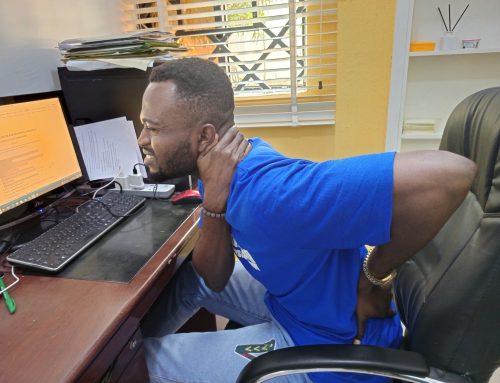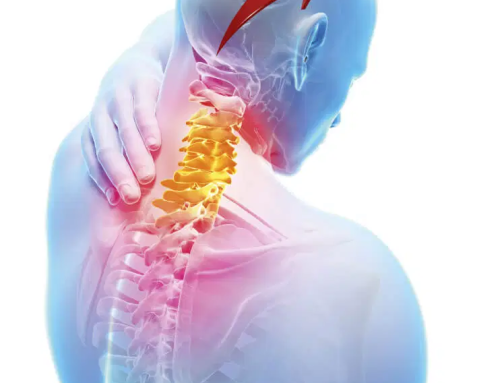Contents
What is sciatica?
Sciatica is nerve pain from an injury or irritation to your sciatic nerve. In addition to pain, it can involve tingling or numbness in your back or butt that may also radiate down your leg. More severe symptoms are also possible. Sciatica is a common condition, occurring mostly in people aged 30 to 50. It rarely happens before age 20 unless it’s injury-related.
Your sciatic nerve is the longest and thickest nerve in your body. It’s up to 2 centimeters wide (a U.S. penny or a United Kingdom 1 pence coin are about the same width). Despite its name, it’s not just one nerve. It’s a bundle of nerves that come from five nerve roots branching off from your spinal cord.
You have two sciatic nerves, one on each side of your body. Each sciatic nerve runs through your hip and buttock on one side. They each go down the leg on their side of your body until they reach just below your knee. Once there, they split into other nerves that connect to parts farther down, including your lower leg, foot and toes.
Having sciatica means you can experience mild to severe pain anywhere with nerves that connect to the sciatic nerve. The symptoms can affect your lower back, hips, buttocks or legs. Some symptoms may extend as far down as your feet and toes, depending on the specific nerve(s) affected.
Types
There are two types of sciatica. Regardless of what type you have, the effects are the same. The types are:
- True sciatica. This is any condition or injury that directly affects your sciatic nerve.
- Sciatica-like conditions. These conditions feel like sciatica but happen for other reasons related to the sciatic nerve or the nerves that bundle together to form it.
Healthcare providers tend to refer to both types as just “sciatica.” Their differences usually only matter when your healthcare provider determines how to treat them.
Symptoms
Sciatica symptoms can include:
- Pain. Sciatica pain happens because of pressure on the affected nerve(s). Most people describe sciatica pain as burning or like an electric shock. This pain also often shoots or radiates down the leg on the affected side. Pain commonly happens with coughing, sneezing, bending or lifting your legs upward when lying on your back.
- Tingling or “pins and needles” (paresthesia). This is similar to your feeling when a leg falls asleep because you sat cross-legged.
- Numbness. This is when you can’t feel sensations on the skin in the affected areas of your back or leg. It happens because signals from your back or leg are having trouble reaching your brain.
- Muscle weakness. This is a more severe symptom. It means that muscle command signals are having trouble reaching their destinations in your back or legs.
- Urinary incontinence or fecal incontinence. This is a very severe symptom. It means signals that control your bladder and bowels aren’t reaching their destinations.
Causes
Sciatica can happen because of any condition that affects the sciatic nerve. It can also happen because of conditions affecting any of the five spinal nerves that bundle to form the sciatic nerve.
Conditions that can cause sciatica include:
- Herniated disks.
- Degenerative disk disease.
- Spinal stenosis.
- Foraminal stenosis.
- Spondylolisthesis.
- Osteoarthritis.
- Injuries.
- Pregnancy.
- Tumors, cysts or other growths.
- Conus medullas syndrome.
- Cauda equina syndrome.
Risk factors?
Because sciatica can happen for so many reasons, there are many potential risk factors, which include, but aren’t limited to:
- Having a current or previous injury. An injury to your spine or lower back increases your risk of developing sciatica.
- Normal wear-and-tear. As you get older, normal wear-and-tear on your spine can lead to pinched nerves, herniated disks and other conditions that can cause sciatica. Age-related conditions like osteoarthritis can also play a role.
- Having excess weight or obesity. Your spine is like a construction crane when you stand upright. The weight you carry in the front of your body is what your spine (crane) has to hoist. Muscles in your back are like the winch and cable, pulling to keep you vertical. The more weight you have, the more your back muscles have to work. That can lead to back strains, pain and other issues.
- Having insufficient core strength. Your “core” is the term for the muscles of your back and abdomen (stomach area). Like in the crane analogy, having a stronger core is like upgrading the crane’s components to handle a heavier load. The muscles of your abdomen are important because they help anchor your back muscles.
- Your job. Jobs that require heavy lifting, a lot of bending, or working in awkward or unusual positions may increase your risk of low back problems. However, jobs with prolonged sitting — especially without proper back support — may also increase your risk of low back problems.
- Not using good posture and form when lifting. Even if you’re physically fit and active, you can still be prone to sciatica if you don’t follow proper body form during weight lifting, strength training or similar activities.
- Having diabetes. Type 2 diabetes increases your risk of diabetes-related peripheral neuropathy. That damages your nerves, including any of the nerves that can cause or contribute to sciatica.
- Physical inactivity. Sitting for long periods and a lack of physical activity can contribute to an increased risk of sciatica.
- Using tobacco. Nicotine use can affect circulation and increase your risk of chronic pain. That includes conditions like sciatica.
- Unknown causes. Many cases of sciatica don’t have a cause that healthcare providers can find.
What are the complications of sciatica?
Most people recover fully from sciatica. However, a possible complication of sciatica is chronic (long-term) pain.
If there’s serious damage to an affected nerve, chronic muscle weakness, such as a “drop foot,” might happen. That’s when nerve damage causes numbness in your foot, which makes normal walking difficult or even impossible.
Sciatica can also potentially cause permanent nerve damage, resulting in a loss of feeling in the affected legs.
Prevention
Some causes of sciatica are preventable, but others happen unpredictably or for unknown reasons. For the causes that aren’t preventable, it may still be possible to reduce your risk of developing them.
The following can help prevent sciatica or reduce the risk of it happening:
- Maintain good posture. Follow good posture techniques while you’re sitting, standing, lifting objects and sleeping.
- Quit (or don’t start) using tobacco products. Nicotine from any source (including vaping) reduces blood supply to your bones, which can weaken your spine and its various components.
- Reach and maintain a weight that’s healthy for you. Your primary care provider can guide you on how to eat and get physical activity. Make sure you get enough calcium and vitamin D for bone health, too.
- Stay active. Physical activity can include everything from stretching to strength training. Increasing core strength and flexibility can improve back pain. Other forms of activity, such as aerobic exercise, can also help you reach and maintain a weight that’s healthy for you.
- Protect yourself from falls. Wear shoes that fit and keep stairs and walkways free of clutter to reduce your chance of a fall. Make sure rooms are well-lit, and there are grab bars in bathrooms and rails on stairways.
- Take time to recover if needed. Don’t try to work through back pain. That can lead to even worse injuries. Back pain doesn’t have to keep you from being active, either. You can still participate in low-impact activities such as swimming, walking or yoga.
Management and Treatment
Depending on the cause, milder cases of sciatica usually get better with self-treatment, some of which include:
- Ice: Cold or ice packs can help reduce pain and swelling during the first few days after sciatica pain starts. You can use an ice pack or a bag of frozen vegetables for this (but always wrap them in a towel to prevent cold-related injuries to your skin). Apply cold for 20 minutes at a time, several times a day.
- Heat: After the first several days of using cold or ice, switch to a heating pad or warm compress. Apply heat for 20 minutes at a time. If you’re still in pain, switch between hot and cold packs — whichever best relieves your discomfort
However, pain that’s moderate to severe, with numbness and tingling or muscle weakness are all symptoms that need professional medical care, including:
- Physiotherapy: The goal of physical therapy is to find exercise movements that decrease sciatica by reducing pressure on the nerve. A physiotherapist can also design a program to help prevent future injuries. This typically includes exercises to correct posture, strengthen the core and improve range of motion. Seeing a chiropractor for spine adjustments, acupuncture and massage therapy can also be helpful.
This FREE assessment sessions are great for anyone with Sciatica
At Amazing Physiotherapy, we have different clinics (Abuja, Lagos and Portharcourt) and we offer FREE physiotherapy consultations, where you can speak to a member of our team, ask any questions that you have, and find out what can be done to treat sciatic pain
It gives you the opportunity to ask questions and ensures that we are the right fit for you.
Secure your FREE spot now. Click here to complete our inquiry form or call 07026750637/08083654963
P.S. Do you know someone with sciatica? We are here to help them live a pain-free life today!
Kindly forward this blog post to your neighbor, colleague, friends and family to treat their pain because remember….. HEALTH is WEALTH.
Note: Referring someone to see us at our prestige Clinic will earn you FREE ENTRY into our ‘referral for rewards’ prize draw.







Leave A Comment